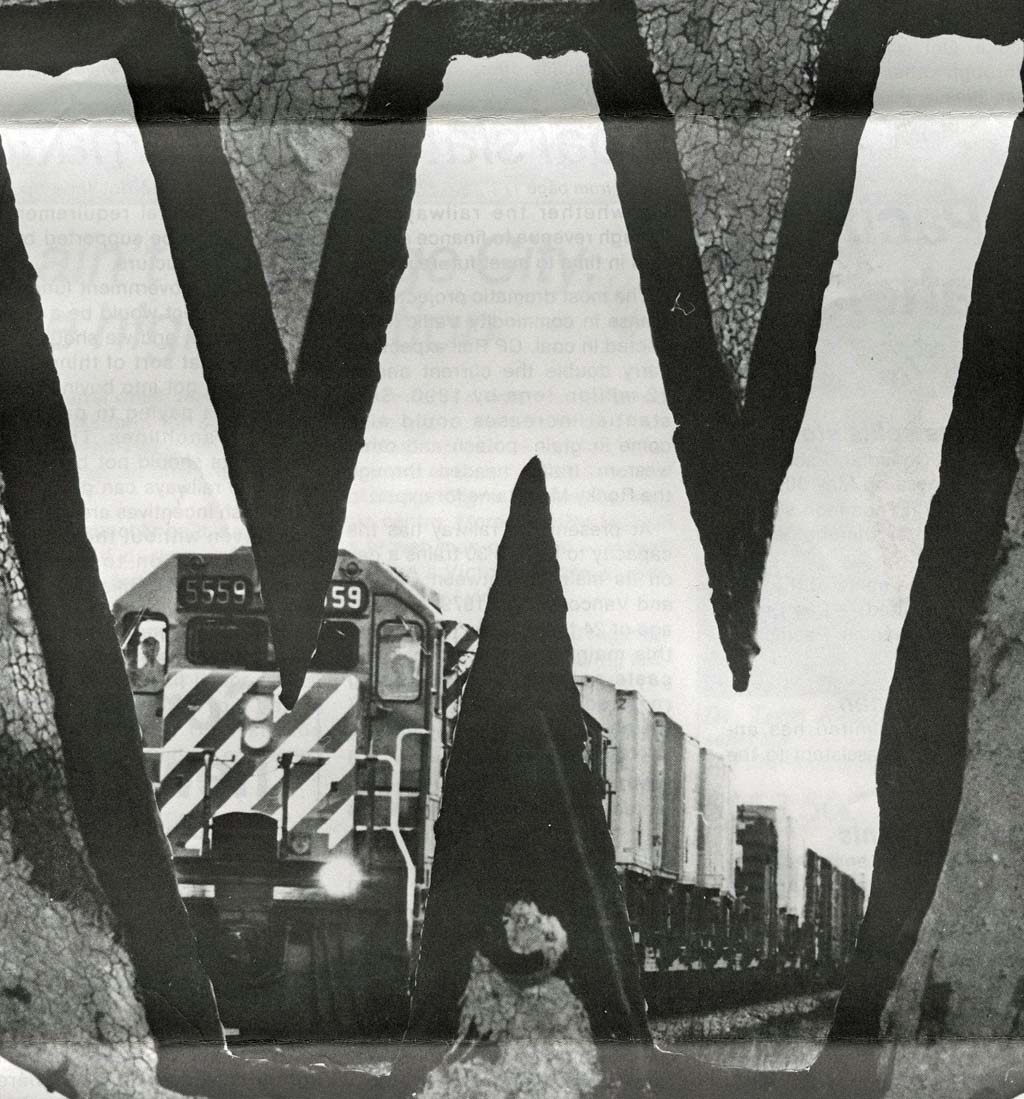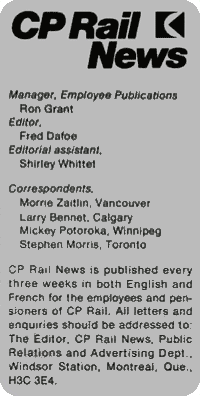
Number 7
May 28, 1980

For CP Rail, hauling grain for export has been a losing proposition to the tune of $100 million in operational costs alone each year. Antiquated grain rates frozen by federal law nearly six decades ago are to blame.
Unless these artificial rates are repealed by the government, the railway will not be able to fund such major, and much needed, projects as the $300 million tunnel under Rogers Pass to meet increased commodity traffic, says Executive Vice-President W.W. Stinson.
TRAFFIC INCREASE
"The railways have coped with a pretty substantial traffic increase over the last 20 years. They've done very well," he said in a recent interview.
"But this thing is now coming to a crunch."
Mr. Stinson added: "We can not currently see a way to finance such a tunnel and we are going to reach capacity limitations west of Calgary by the mid-1980's unless some solution is found."
The proposed 8.9 mile tunnel under Rogers Pass, at a lower elevation than the existing five mile Connaught Tunnel, is the centerpiece of a major plan to expand CPR's mainline capacity between Calgary and Vancouver.
Annual volume on parts of this corridor has already reached more than 55 million gross tons, which is the measure of freight and rolling stock on the move. This figure is more than double the number of gross tons tallied in 1968.
Mr. Stinson said the next one or two years are going to be "very, very critical" in determining whether the railways get enough revenue to finance expansion in time to meet future needs.
 The most dramatic projected increase in
commodity traffic is expected in coal. CP Rail expects to carry double the current annual 12 million tons by 1990. Substantial increases could also come
in grain, potash, and other western traffic headed through the Rocky Mountains for export.
The most dramatic projected increase in
commodity traffic is expected in coal. CP Rail expects to carry double the current annual 12 million tons by 1990. Substantial increases could also come
in grain, potash, and other western traffic headed through the Rocky Mountains for export.
At present the railway has the capacity to handle 30 trains a day on its mainline between Calgary and Vancouver. In 1979, an average of 24 trains a day moved over this mainline and current forecasts point at 30 a day being reached in 1985. By 1990, 37 trains a day would have to be operated.
Mr. Stinson said the two completed double-tracking schemes and one in hand have to be coupled with the new tunnel and grade easement for west-bound trains running up the east slopes of the Selkirk mountains in order for CP Rail to be able to handle the projected growth in freight traffic.
But having the government pay the cost of the tunnel or offer interest-free loans without modernizing the present export grain rates will not solve the problem, stressed Mr. Stinson.
"All that would do is postpone the issue. It would not face up to our other capital requirements which have to be supported by a sound tariff structure."
"Directing government funds to a tunnel project would be a stopgap approach and we should not be doing that sort of thing. The government got into buying grain cars and is paying to patch up Prairie branchlines. These involvements should not be necessary. The railways can do the job if the cash incentives are there."
But even without the planned major expansion to meet the growing export traffic, Mr. Stinson said current losses experienced in hauling grain would become a threat to other commodities.
Rising fuel costs and other expenses would mean Canadian Pacific shareholders could no longer absorb such losses on grain. The end result would be higher rates for other commodities which would lessen their competitiveness on the world market.
Mr. Stinson expressed optimism that the government and the grain industry are approaching an agreement on how to get more money to the railways.
If a solution is reached in the near future, there should be no problem meeting growing transportation needs, he said.
 and is reprinted here with their permission.
All photographs, logos, and trademarks are the property of the Canadian Pacific Railway Company.
and is reprinted here with their permission.
All photographs, logos, and trademarks are the property of the Canadian Pacific Railway Company.